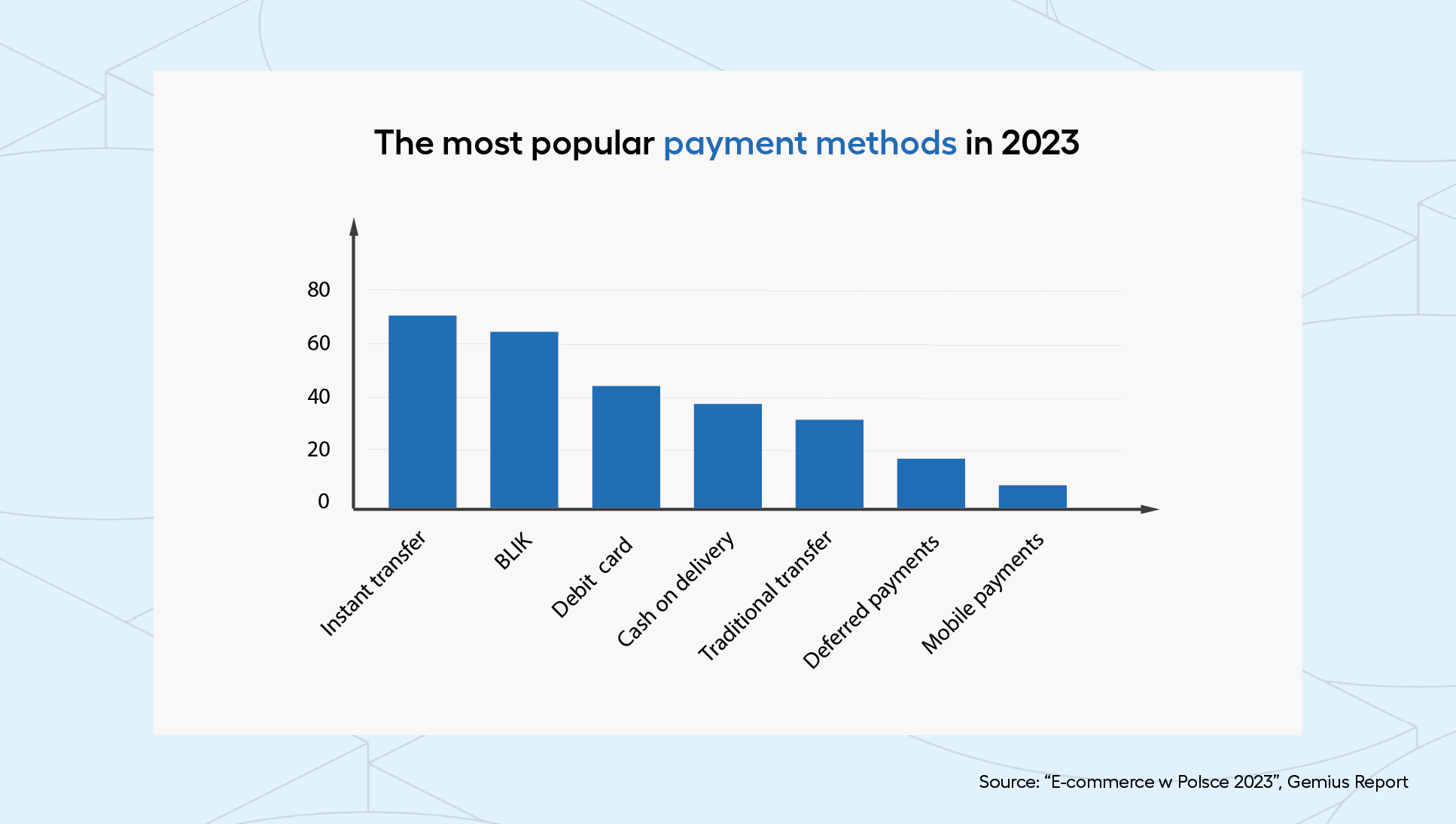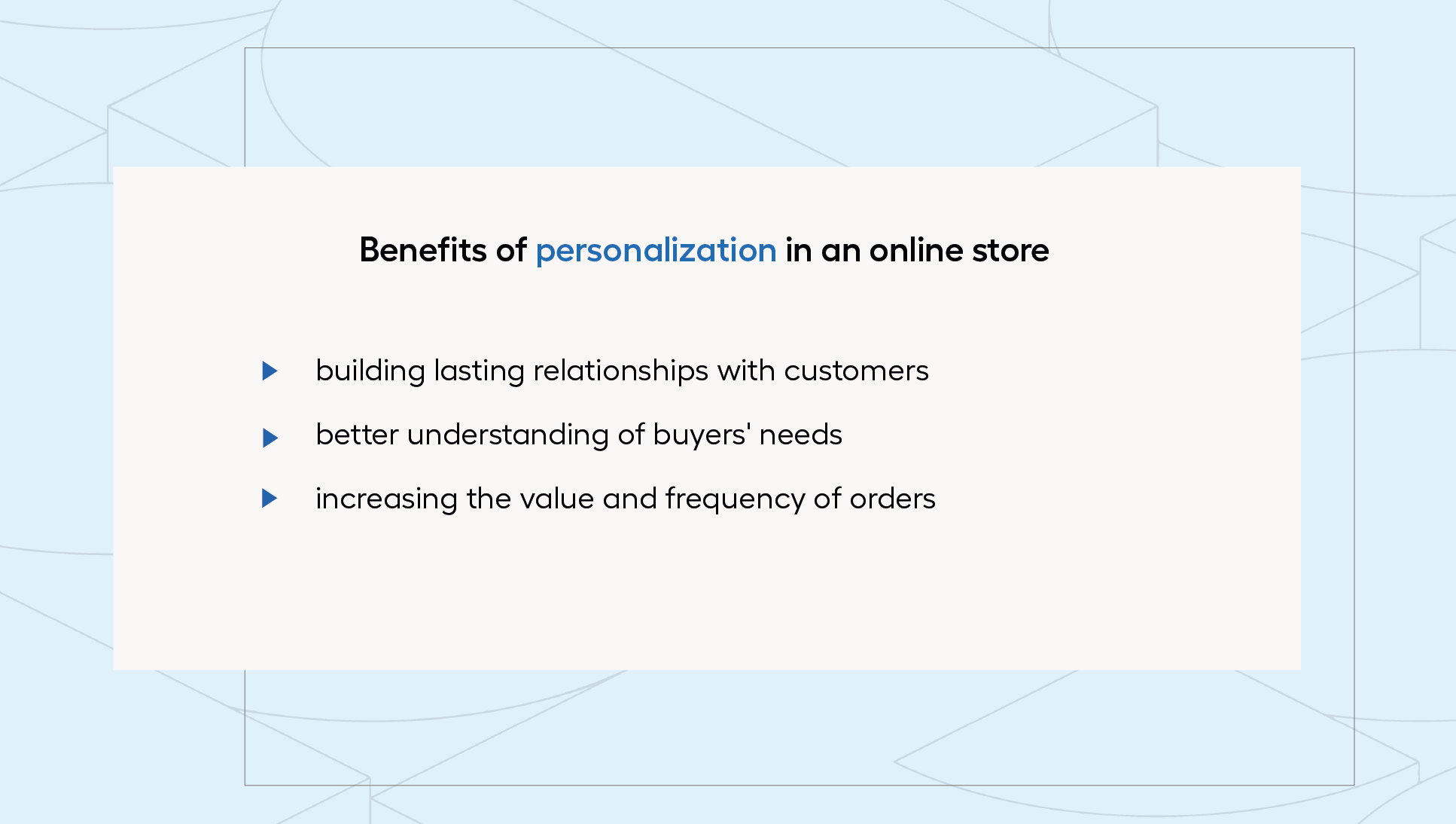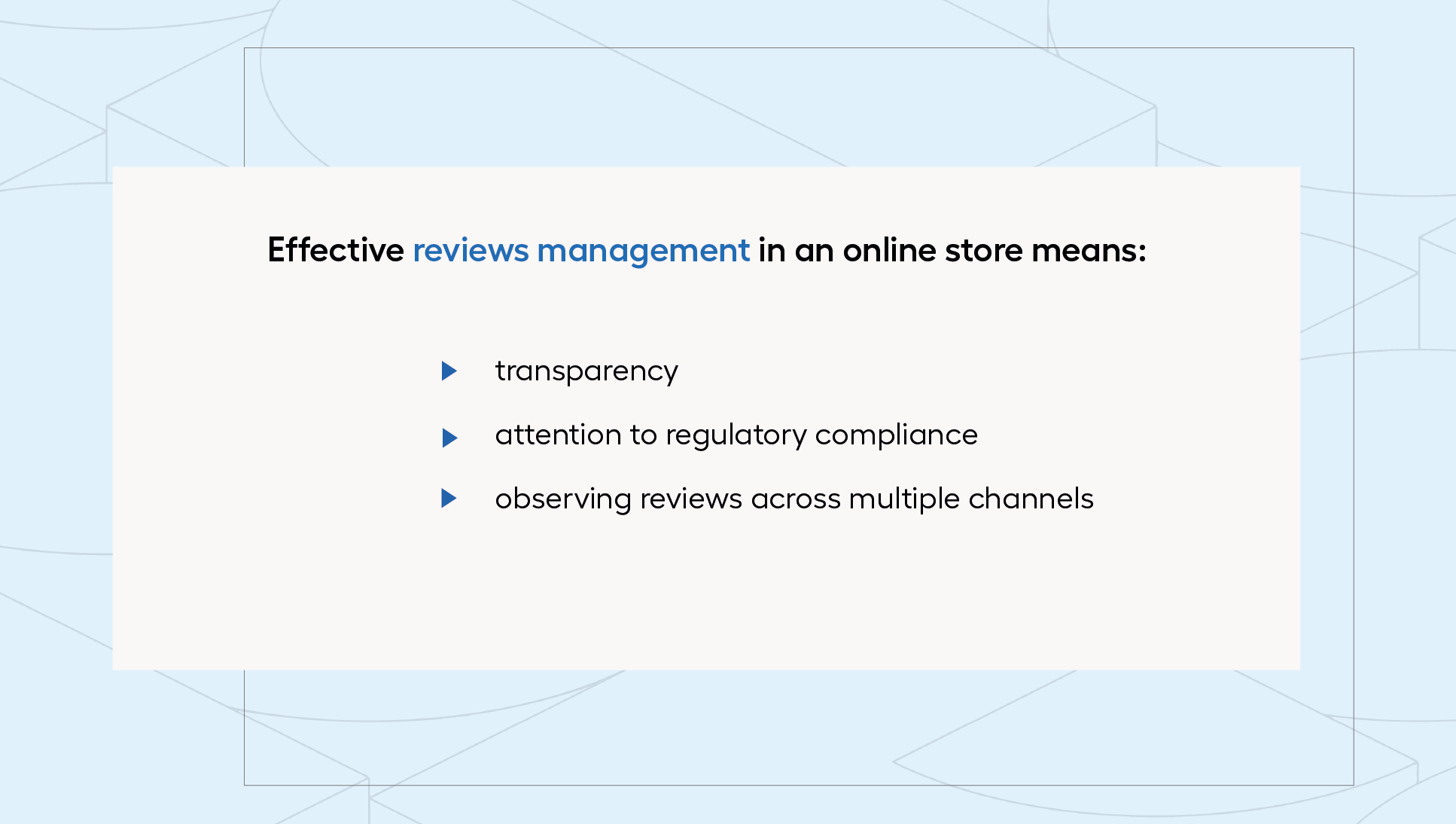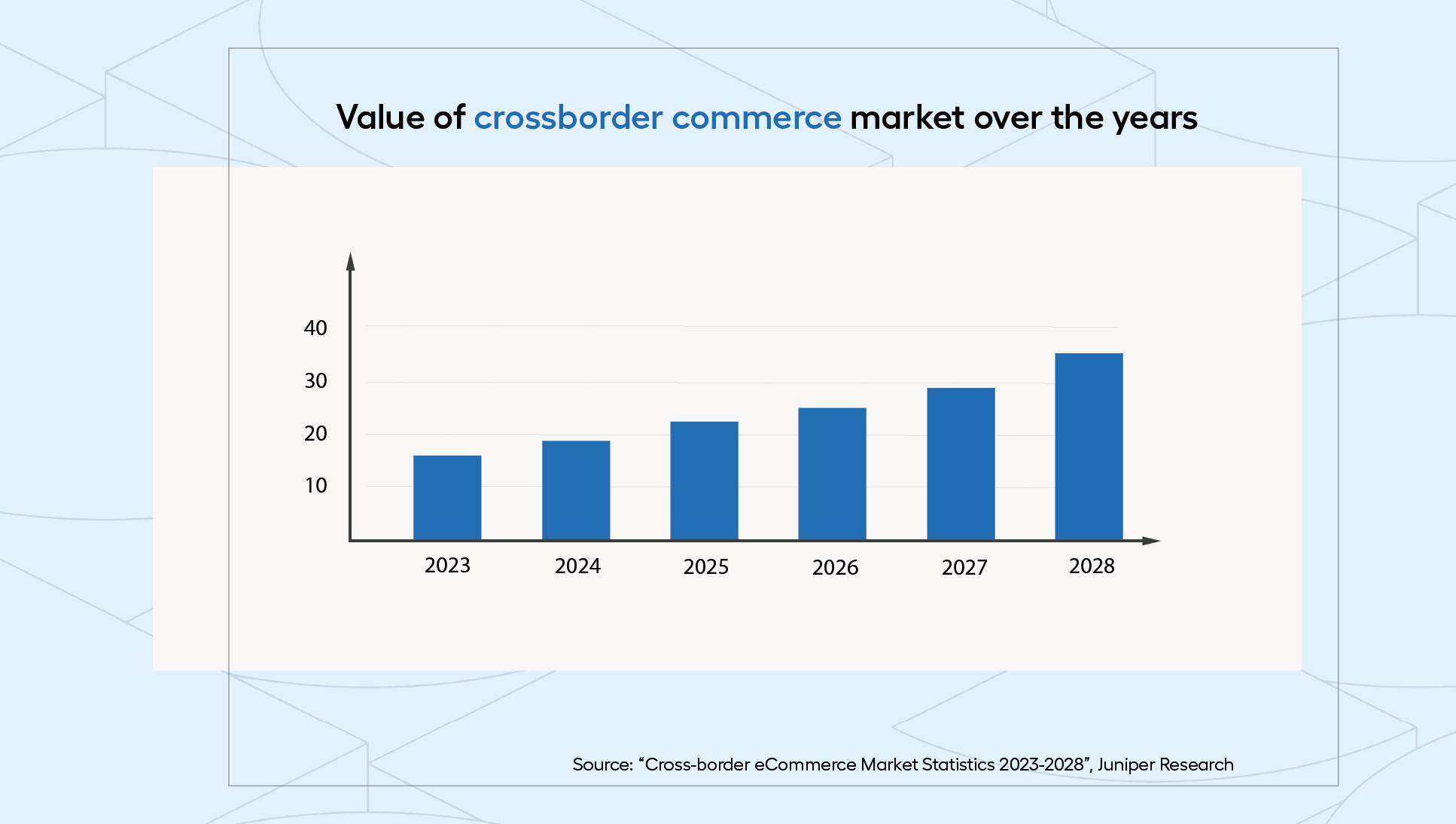5 insights from Commercey statistics that will improve your online shtore's performance
Table of contents:
- eCommerce in numbers - why is it worth following industry reports?
- Poles use at least 9 different payment methods when shopping online
- 78% of consumers are willing to pay more for products from a brand that provides personalised experiences
- For 43% of customers, reviews matter when choosing an online store
- 83% of companies in developed countries focusing on developing online sales in B2B industry
- Cross-border commerce transactions will increase by 107% over the next 5 years
- Numbers don't lie - use them to improve your e-store's performance
- fast transfers in payment services like PayU or przelewy24 - 69%,
- BLIK payments - 63%,
- card payments when placing an order - 43%,
- cash on delivery option - 38%, or payment upon personal collection in the store - 32%,
- traditional bank transfer - 35%,
- deferred payments (e.g., Klarna or PayPo) - 15% and instalment payments - 11%,
- mobile payments (e.g., via QR codes) - 5%.
- AI-based recommendation algorithms - artificial intelligence enables effective analysis of customer preferences and shopping behaviors. As a result, your platform can offer personalized product recommendations, perfectly tailored to the needs and expectations of each user.
- loyalty programs - rewarding with loyalty points for purchases, participation in special programs, and offers dedicated to regular customers motivate them to visit the site more often and constitute an effective strategy for building lasting relationships.
- dynamic product pages - introducing interactive elements such as product recommendations or promotions tailored to each customer makes each visit to the site a unique experience.
- personalized notifications and email marketing campaigns - customizing the content of notifications and email campaigns for each recipient allows for maintaining continuous contact with them, strengthening their loyalty and propensity to make repeat purchases.
- Compliance with regulations - before publishing reviews on your website or elsewhere (e.g., on social media), it is crucial to ensure that their content does not mislead consumers. Failure to do so may result in, among other things, a fine. It is also important to adhere to the guidelines set out in the EU Omnibus Directive, which imposes an obligation to verify whether the reviews were posted by individuals who actually purchased the product.
- Consideration of negative reviews - hiding negative reviews can undermine customer trust. On the other hand, a transparent approach to various opinions increases the credibility of the store. Effective review management also involves openness and appropriate response to criticism.
- Monitoring opinions across multiple channels - nowadays, customers can share their opinions not only on your website. They are just as eager (if not more so) to share their experiences on social media profiles. Therefore, it is necessary to monitor published content across multiple channels to get a full view of what customers think about your products or service quality.
- improving operational efficiency - moving sales online allows for the automation of order fulfillment processes, monitoring deliveries, and efficient inventory management.
- deeper data analysis - thanks to B2B eCommerce platforms, companies can accurately analyze data on the behavior of contractors, their purchases, and the effectiveness of conducted activities, which is the basis for strategic business decisions.
- adapting the offer to the individual needs of the contractor - B2B platforms enable customization of the offer to the individual needs of contractors, e.g., through product personalization and flexibility in price negotiations, which is the foundation for building long-term relationships with customers.
- optimizing costs - automation of processes and electronic order placement contribute to reducing operating costs, minimizing errors, and shortening order fulfillment times.
- global digitalization - the development of the internet and digital technologies enables easier access to foreign markets (not only the highly developed ones) and the execution of online transactions from anywhere in the world.
- technological advancement - conducting foreign transactions is becoming increasingly easier and safer. Thanks to modern payment systems, logistics improvements, or the possibility of automating content translation into various languages, placing orders online in a native and foreign e-store is practically indistinguishable.
- changing consumer attitudes - customers are becoming increasingly open to using services and products from beyond their country's borders. Searching for unique products and seeking out the best deals becomes a priority for them.
While browsing portals with industry news, you have undoubtedly come across reports (often multi-page), research, or forecasts regarding the state of eCommerce. However, have you ever wondered what all these statistics, charts, and numbers actually mean for you and your online business? Properly interpreted, they constitute not only "dry facts" but also a treasure trove of valuable tips useful in making informed business decisions. To prove this thesis, we have reviewed the most popular publications and extracted from them what is most important, namely advice that will help you succeed in the world of e-commerce. Read the article and find out what interesting insights can be gleaned from between the lines of industry reports published over the past 3 years (since 2021).
eCommerce in numbers - why is it worth following industry reports?
"The value of the industry this year increased by a staggering 2 million dollars," "56% of customers abandon online purchases," "for over half of the users, this aspect is the most important during e-shopping" - percentages, numbers, calculations, and estimates can be found practically everywhere on the web. They provide a significant summary of the current market condition and also indicate its further development directions or the latest trends. However, how do you interpret this data in the context of your own online store?
Although reports are often based on averaged values concerning only a slice of the industry and may not fully align with a company's individual situation, they should not be treated only sceptically. Despite potential limitations, analysing relevant data allows you to obtain valuable insights into customer preferences, market competitiveness, or even potential gaps in the offer. Skillful use of eCommerce reports can lead to more accurate business decisions and better adaptation of your platform to changing market realities. See what conclusions the analysis of 5 example statistics from reports and research available online has brought!
Poles use at least 9 different payment methods when shopping online
Online stores attract customers not only with an extensive range of products, the possibility of conveniently placing an order anywhere (e.g., directly from the couch in the living room or in a hurry while travelling by bus) but also through a wide range of payment methods. According to one of the most popular industry reports, "E-commerce w Polsce 2023" published annually by Gemius, Poles prefer to pay using:
The availability of such diverse payment methods is crucial not only for convenience but also for the flexibility of managing the budget by consumers. In times when many people feel the effects of the economic crisis and are keen on meticulous planning of expenses, enabling deferred or instalment payments can be an additional advantage, speaking in favour of using the e-store's offer. Additionally, such a payment form encourages undecided customers to make purchases, allowing them to order several variants of a product to choose the best one without locking funds while waiting for refunds for unsuitable goods.

The evolution in available payment methods reflects a growing awareness and openness to increasingly innovative online payment technologies. An excellent example of this is mobile payments - although not yet dominant in the market, their gradual increase in popularity (the number of people placing orders using a smartphone increased from 69% in 2020 to 79% in 2023) indicates changing purchasing preferences. Entrepreneurs also recognize this trend, with more and more of them introducing their own payment methods to the market (e.g., Amazon Pay, InPost Pay, or Allegro Pay). To meet the growing demands of consumers, however, you don't have to resort to such complicated actions - it's important to remember that providing flexibility in payment options is a key element of the strategy to attract and retain the loyalty of your eCommerce customers.
78% of consumers are willing to pay more for products from a brand that provides personalised experiences
If you're wondering how to encourage customers of your store to make more frequent or larger purchases, this is another reason to delve into industry reports. According to findings from McKinsey's research, a whopping 78% of consumers are willing to pay more for products from a brand that provides personalized shopping experiences. Elements such as product recommendations based on past purchases or personalized promotions make customers feel appreciated and understood by the brand. You can achieve such effects by enriching your platform with appropriate tools. Among them, it's worth paying special attention to:

For 43% of customers, reviews matter when choosing an online store
Would you rather choose a product you randomly came across on the street or one recommended by your friend or family member? You'd probably opt for the latter. This is because social proof plays a crucial role in the consumer decision-making process. Experiences and recommendations of other people are the most credible source of information for many, which ultimately affects not only their purchasing decisions but also trust in the online store. This is confirmed by the Gemius report, which indicates that as much as 43% of customers attach great importance to the opinions of others when choosing an online store.
The eCommerce reality allows customers to compare prices of individual products more easily. Often, it is the price that is the deciding factor (but not the only one) in placing an order in a particular store. To distinguish your offer, you can also decide, for example, to highlight reviews from other users. It is thanks to them that consumers can get a reliable picture of the quality of service, delivery, and offered products. Therefore, it is important to pay attention to the way reviews are presented, as well as the transparency of the opinions presented. What should you keep in mind in this context?

83% of companies in developed countries focusing on developing online sales in B2B industry
At a time when eCommerce targeted at individual consumers (B2C) is breaking popularity records, online business-to-business (B2B) commerce is also growing dynamically. According to Deloitte's "B2B e-commerce" report, as many as 83% of companies operating in the B2B sector in developed countries take advantage of the opportunity to conduct transactions online. This should come as no surprise - after all, business partners who use online shopping in their private lives on a daily basis expect similar standards and convenience in professional relationships. Moving to the online business sphere is also beneficial for other reasons - what are they?
A B2B sales platform allows you to streamline the operation of the entire business, including, among others:
All of this indicates that investing in a B2B eCommerce platform is not only a step towards current trends but above all a strategic decision ensuring sustainable development and success in business.
Cross-border commerce transactions will increase by 107% over the next 5 years
It's already certain - international trade has become one of the dominant trends in the industry. Over the past few years, customers have increasingly opted for purchases on foreign platforms, and online store owners have boldly expanded their operations to new markets. In 2023, the value of the cross-border commerce market, i.e., international online sales, reached $1.6 trillion, and this is just the beginning... According to forecasts by Juniper Research, by 2028, this value will exceed $3.3 trillion, which represents a 107% increase over 5 years. What is responsible for such rapid development of foreign sales and how can you prepare your online business for it?

The growing popularity of cross-border commerce can be attributed to several factors. These include:
Preparing for the dynamic development of cross-border commerce is essential for online store owners who are keen on scaling their business and maintaining a competitive position. To achieve this, specific actions are necessary both from a technical and a brand image perspective. Online sellers should focus on adapting their marketing strategy, understanding local shopping habits, cultural differences, and consumer preferences in different markets. Equally important will be preparing the platform for seamless operation abroad - ensuring ease of purchase and adequate logistical support guarantees positive shopping experiences for customers from different parts of the world.
Numbers don't lie - use them to improve your e-store's performance
You now know why it's worth referring to industry reports. You've also learned how to extract valuable tips for your business from industry statistics. Now you can put them into practice and continue to seek advice independently by consulting publications on eCommerce. Remember, always rely on reliable sources and always keep in mind the individual characteristics of your own store. This way, the decisions you make will be more accurate and tailored to the needs and capabilities of your online business.
For more inspiration, make sure to regularly check out our blog, where you'll always find valuable tips and advice on running an online store and designing sales platforms!
Sources:



